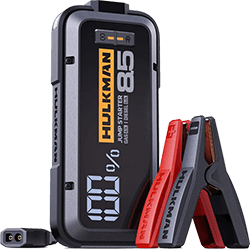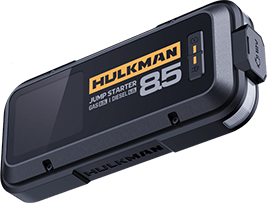Recent Articles
-
Mapping America’s Solar Landscape: Regional and Seasonal Variations November 11, 2025
-
Why Solva Solar Panels Stand Out: From Consumer’s Comment November 06, 2025
-
Unleashing Solar Power: Tips for Using and Maintaining Portable Solar Panels November 03, 2025
Featured Products
note
Generator vs. Power Station: Choosing the Right Backup Power for Your Needs
In the U.S., where the electrical grid operates on a 120V/240V split-phase, 60Hz system, power outages can disrupt daily life, especially in areas prone to extreme weather like tornadoes in the Midwest or hurricanes along the coasts. When the lights go out, backup power solutions like generators and home/portable power stations become essential. But what’s the difference between these two devices, and how do you choose the right one for your home or outdoor needs? This blog dives into their core differences, compares their performance in real-world scenarios, and offers a clear guide to picking the best option for your specific situation.
In this article, we’ll cover:
- Core Function: How Each Device Actually Converts Power
- Real-World Use in the U.S. Grid
- Selection Strategy: How to Choose the Right Technology
- Looking Ahead: Smarter, Integrated Conversions
- Final Takeaway
How They Work: Generators vs. Power Stations
At their core, generators and power stations operate on entirely different principles. A generator produces electricity in real time through electromagnetic induction. It uses fuel—gasoline, diesel, or natural gas—to power an internal combustion engine, which spins a rotor to generate 120V or 240V alternating current (AC) compatible with the U.S. grid. Single-phase generators typically output 120V for smaller appliances, while three-phase models can deliver both 120V and 240V for heavy-duty equipment like ovens or HVAC systems. Gasoline generators are portable and great for occasional use, natural gas models suit long-term home backup, and diesel generators excel in industrial settings due to their high torque.
In contrast, a home or portable power station stores energy for later use. These devices rely on lithium-ion batteries (often lithium iron phosphate or ternary lithium) paired with an inverter and charge management system. They charge via the grid’s 120V/240V AC power, storing it as direct current (DC), which the inverter converts back to AC during an outage. Home power stations often support 240V high-power output for appliances like refrigerators or dryers, while portable models focus on 120V for smaller devices like laptops or camping gear. Their capacity (measured in ampere-hours, Ah, or watt-hours, Wh) and output power determine how long they can run and what devices they can support.
The key difference lies in energy sourcing: generators rely on a continuous fuel supply, meaning no risk of “running out” as long as fuel is available, while power stations depend on pre-stored energy, requiring recharging but no fuel. Generators produce AC directly, whereas power stations involve a chain of energy conversion (AC to DC during charging, then DC to AC during use), which can introduce slight efficiency losses.
Real-World Applications: Where Each Shines
The U.S. grid’s split-phase system and regional challenges shape how these devices perform in different scenarios. Let’s explore their strengths.
Home Backup Scenarios
In areas like the Midwest, where tornadoes can cause prolonged outages (72+ hours), a natural gas generator is often the better choice. Connected to a home’s gas line, it can run indefinitely, powering 240V appliances like central air conditioners or electric water heaters. For example, a 5000W generator can keep an entire household running smoothly during extended blackouts. However, in noise-sensitive neighborhoods, such as suburban California, power stations are preferred. Operating at under 50 decibels, they’re quiet enough for indoor use or small communities, ideal for 12-24 hour outages to power essentials like refrigerators, Wi-Fi routers, or lighting. For instance, a power station like the Hulkman Mega, with its 576 Wh capacity and pure sine wave output, ensures safe, fast charging for precision devices like home servers or medical equipment, even in cold climates down to -4°F.
Outdoor and Mobile Use
For outdoor activities like RV camping, portable power stations shine. A 120V power station can fit in a car trunk, recharge via a vehicle or solar panels, and power devices like coffee makers or projectors without the noise or fumes of a generator, preserving the camping experience. The Hulkman Mega, for example, supports solar charging (400W max MPPT) and is usable at high altitudes up to 4,000 meters, making it ideal for scientific expeditions or remote camping. Its compact size (12.16 x 7.68 x 9.61 inches) and soft-rubber handle enhance portability, while dual PD fast-charging ports (65W/100W USB-C) cater to drones or cameras. Conversely, construction sites or remote work areas benefit from diesel generators, which deliver high continuous power (5000W+) for 240V tools like drills or temporary lighting, where fuel is often easier to source than charging infrastructure.
Grid Support and Off-Grid Needs
In regions like Texas, where grid fluctuations are common, a home power station acts as a “buffer”, charging when the grid is stable and automatically switching to backup mode during voltage drops to protect sensitive equipment like servers or medical devices. In off-grid locations, such as rural farms, a gasoline generator can serve as the primary power source, paired with a small power station to stabilize voltage for 60Hz-compatible devices.
This aligns with insights from online forums. For instance, in discussions on r/HomeImprovement, many users prefer power stations for short-term outages due to their ease of use, silent operation, and lack of maintenance, with one noting, "The nice thing about batteries is they do not require a daily expense when you use them." Meanwhile, generators are favored for long-term reliability in rural settings, especially for extended outages up to 2 days or more, though users highlight the need for fuel management like using propane to avoid gumming issues.(Reddit) Another thread emphasizes generators for hurricane-prone areas like Houston, recommending models like Kohler for whole-home coverage during 70+ hour blackouts, while praising batteries for seamless solar integration and zero fuel costs in efficient homes. (Reddit)
Choosing the Right Option: A Simple Guide
To pick the best backup power solution, consider these four factors:
Power Needs and Duration: For outages lasting over 72 hours or to power 240V appliances like ovens or air conditioners, choose a generator with at least 5000W capacity. For shorter outages or smaller devices (e.g., laptops, drones), a 1000-3000Wh power station like the Hulkman Mega (576 Wh, 600W, or 1200W in Turbo Mode) is sufficient, with its ≤15 ms UPS transfer time ensuring seamless power for sensitive electronics.
Environment: In noise-sensitive areas, indoors, or for camping, opt for a power station. For outdoor work or off-grid locations, a generator is more practical.
Energy Availability: If you have access to a gas pipeline, a natural gas generator is ideal. In areas with reliable grid or solar access, a power station is more convenient. Gasoline generators work well where fuel stations are accessible.
Compliance: Ensure the device is UL-certified (e.g., Honda generators or the Hulkman Mega, with UL2743, CEC, DOE, FCC certifications) to match U.S. grid standards (120V/240V, 60Hz) and prevent equipment damage.
The Future: Cleaner and Smarter Backup Power
As the U.S. pushes toward carbon neutrality, backup power is evolving. Generators are shifting to cleaner fuels like propane or natural gas, with hybrid models (fuel + battery) reducing emissions and noise. Power stations are trending toward larger capacities and faster charging, with dual 120V/240V compatibility for broader appliance support.
The Hulkman Mega exemplifies this trend with its NCM battery (sports car-grade for rapid charging/discharging), Wi-Fi/Bluetooth for remote monitoring, and safety features like a BMS, dual-fan cooling, and 94V0 flame-retardant housing. Research from the National Renewable Energy Laboratory (NREL) suggests that battery-based systems are increasingly integrated with smart grids for peak shaving—in 2024, storage in ERCOT provided up to 3.9 GW during evening peaks, shortening high-risk periods and enabling cost-effective short-duration batteries—while generators remain critical for extreme weather resilience. Key findings include solar-storage hybrids contributing 12-24% of peak generation in high-deployment regions, reducing net load and enhancing resilience to heat waves without major blackouts, with projections for grid-scale solar reaching 140 GW and storage 38 GW by end-2025. (NREL.gov)
Looking ahead, both devices are becoming “smarter”. Features like remote monitoring and automatic power switching are aligning with the U.S.’s smart grid upgrades, making backup power more seamless and efficient. When choosing, prioritize devices with these intelligent features to future-proof your investment.
Conclusion
Whether you’re preparing for a storm, planning a camping trip, or securing an off-grid site, understanding the differences between generators and power stations is key. Generators offer unmatched reliability for long-term or high-power needs, while power stations provide quiet, portable, and eco-friendly solutions for shorter outages or mobile use. By assessing your power requirements, environment, and energy access, you can confidently select the right tool to keep the lights on.
Learn more and use exclusive code "TNZG4NC7" at checkout to get Mega hidden discount.






















